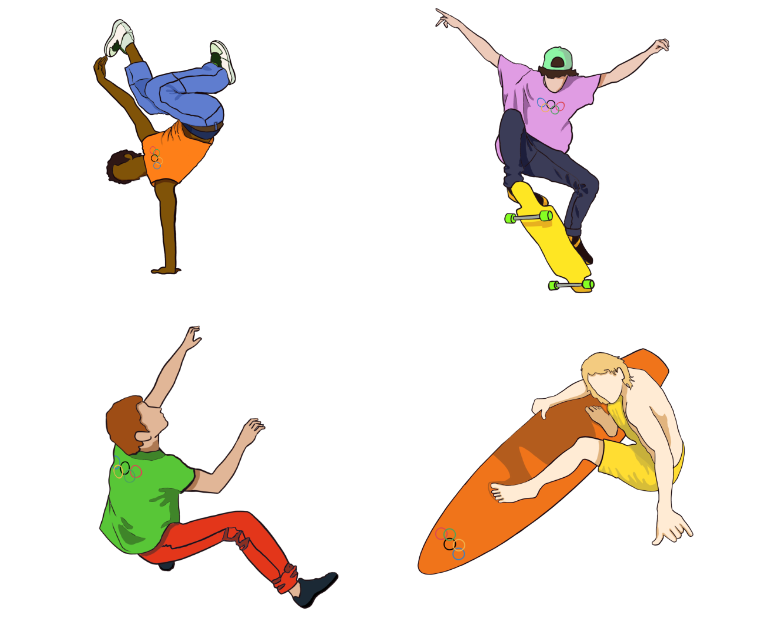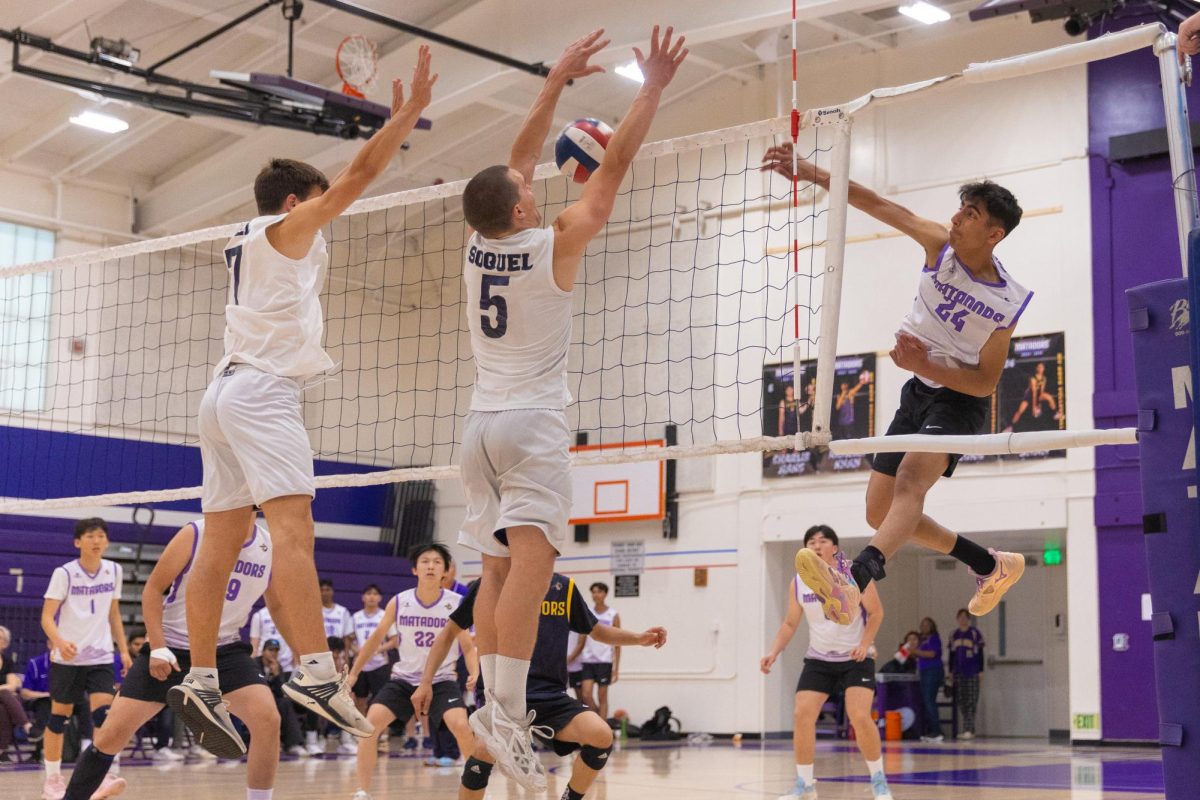The 2024 Paris Olympics are coming back after eight years and a canceled 2020 Olympics with four additional sports: skateboarding, breaking, surfing and sport climbing. The organizing committee at Paris 2024 decided to include the four sports to set a new standard for inclusive, gender-balanced and youth-centered games. However, some participants in these sports believe that the sports will face certain challenges as they attempt to reach a wider audience at the next Olympics.
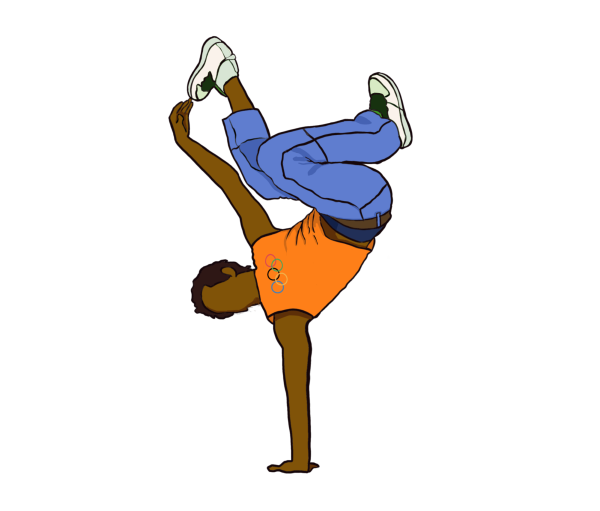
BREAKING
Breaking, a dance form popularized by African American and Latino communities, is meant as a way to express struggles faced in the communities that the dance emerged from, incorporating stylistic moves that stem from a mix of gymnastics and martial arts. Senior Pranai Raina mentions that breaking may not have a large audience everywhere, but remains hopeful that this could be an opportunity for breaking to have a wider level of exposure.
“It’s such an outdated dance that no one does,” Raina said. “I haven’t met that many breakdancers in my life. So seeing it being added to the Olympics will definitely continue the tradition and hopefully prompt other people to join the breakdancing community.”
In breaking competitions, two breakers go head to head and take turns performing. Judges then score the dances on six criteria: creativity, personality, technique, variety, performativity and musicality. Raina adds that the different styles within breaking could be an obstacle for judges due to the wide variation of styles and the impromptu nature of the sport.
“I’m interested to see how they’re gonna judge breakdancers in the Olympics because I feel like styles of dance are subjective,” Raina said. “One judge could like one style of dance more than the other. I like a traditional style of dance, whereas [there are] powerheads who just move around in the air and do head spins and stuff. So that’s going to be interesting to see how people are going to be judged and who’s going to win and how the competitive scene is going to look.”
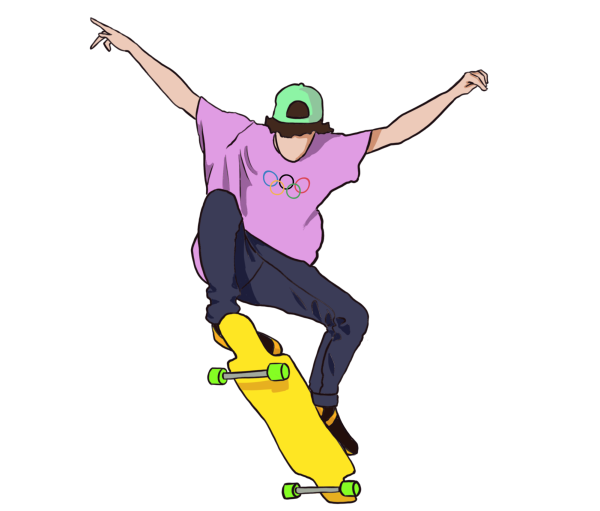
SKATEBOARDING
Skateboarding was initially approved in 2016 and was supposed to appear as an event at the 2020 Olympics; however, it never did due to the COVID-19 pandemic. This sport initially began in the 1950s as an effort to transfer the feeling of surfing onto land, and became more accessible since it didn’t rely on wave conditions. During the 1960s, skateboards evolved from being used as a toy to being used for sport as its popularity began to grow among younger generations.
Junior Annelise Gorts shares that the presence of skateboarding in the Olympics will allow a larger audience to experience high level skateboarding and that it could allow people to view skateboarding in a new light.
“I feel like the Olympics has a pretty large audience and it might gain more recognition.” Gorts said. “Maybe people who didn’t see it as a sport before will see it differently [after] seeing it at the Olympics with that level of skill.”

CLIMBING
Climbing started as a recreational activity in the late 19th century and later became a competitive sport in 1985 in Italy. Climbing was originally planned to debute at the Tokyo 2020 Olympics and will return to the Paris 2024 Olympics. Junior and climber Max Lin says that climbing becoming an Olympic sport will increase its viewership because climbing isn’t thought of as a stereotypical Olympic sport.
“Normally when people think about sports in the Olympics, they think about more sporty sports, like archery — that’s the staple Olympic sport.” Lin said. “As climbing becomes an Olympic sport, it will bring recognition to the sport and climbing athletes.”
Lin mentions how seeing how others approach their climb, specifically climb routes and styles, inspires him for his own ventures. He believes the sport requires both a combination of physical prowess and creative thinking.
“There’s a lot of physical strength needed in climbing. However, there’s also a creative aspect to climbing, like using the rope and route setting,” Lin said. “There’s many different ways that a climber can complete one specific climb and it’s very interesting to see how people approach it.”
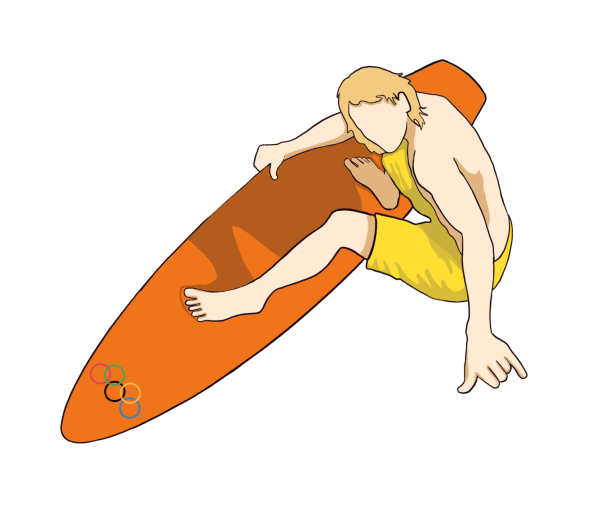
SURFING
Surfing was introduced to the Olympics when lifeguard George Freeth along with three-time Olympic winning swimming champion Duke Kahanamoku campaigned for its addition. In surfing competitions, between two and four athletes will occupy a heat where they have 20 to 30 minutes to catch the best wave possible.
Former pro surfer Jason Collins, who surfed for footage in movies and photographs, recognizes the environmental challenges that come with holding a surfing competition and the lengthy process required to approve an Olympic sport. He mentions the necessity of certain environmental conditions for surfing, which is a lot less predictable than having a set venue for sports requiring snow or an indoor stadium. He adds that the application process for the Olympics began later for surfing, especially since the International Surfing Association gained global traction around the 1970s, a relatively newer organization than other sports.
“You’re at the mercy of mother nature when you have a surfing contest. Additionally, I think just politics are at play since surfers are pretty divided,” Collins said. “For it to be a better global event like snowboarding or skiing, they need to merge the ISA (International Surfing Association) and the WSL (World Surfing League) together when it comes to the Olympics since there are separate opinions and separate ways to qualify.”



